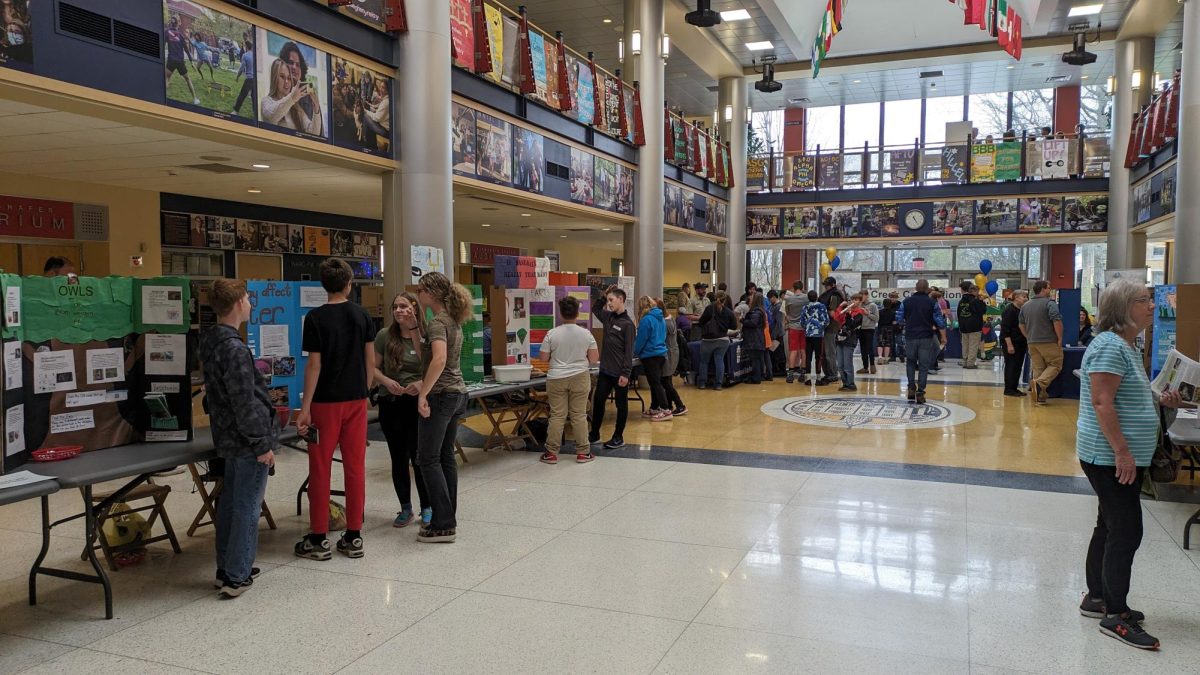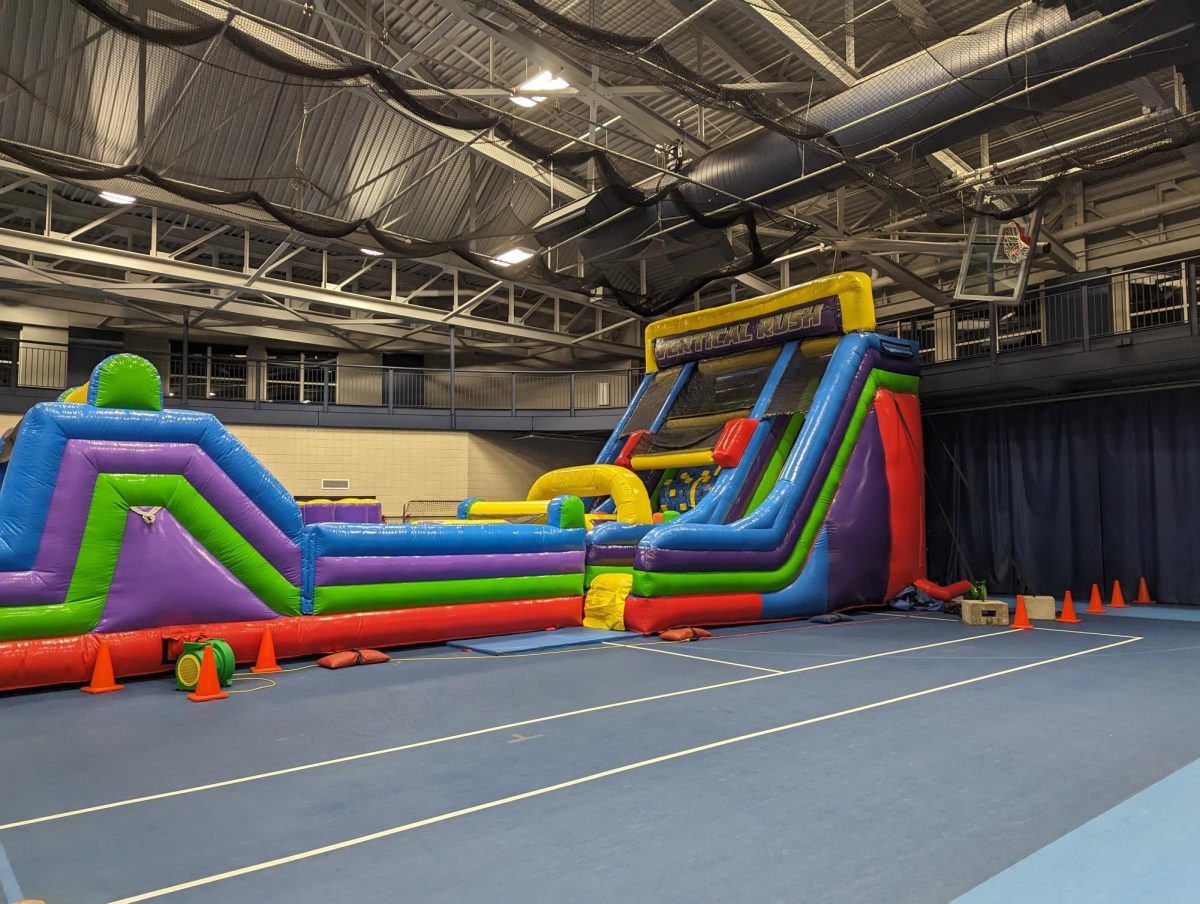Interactive artwork blurs the line between the artist, the art and the observer
By CLAIRE TEAGUE
Features Editor
The relationship between the art and its viewers was challenged on Nov. 5, with the opening of Allegheny’s new exhibit, “Art and the Viewer.” The exhibit included the use of sounds, interactive games, screens and other technologies to engage viewers with the pieces. All of the artworks were designed to be participatory and to be changed by the interaction from the viewer.
The exhibit was curated by Professor of Art George Roland, who is retiring after this year, and Assistant Professor of Art and Gallery Director Darren Lee Miller. The pieces selected come from a variety of notable artists including Pippin Barr, Jeremy Boyle, Molleindustria (Paolo Pedercini), Erik Sanner and Jessica Thompson. Roland, the only artist featured who is affiliated with the college, also contributed to the series.
The premise for the showcase was to incorporate technology as a medium as well as to create pieces that included the viewer into the art itself, so that the viewers would actually change and impact the artworks they are observing. The series includes twelve pieces; some seemingly simple at first glance such as a row of batteries, and others had large projections involved or worked on computer screens.
Students and community members alike walked around and explored the pieces. The interactive nature of the exhibit allowed for a playful curiosity amongst the observers as they investigated the games and sat in on the movie.
“It doesn’t seem to take itself too seriously, it’s meant to be fun,” said Hannah Iseman, ‘17.
Although there was a very playful air about the exhibit, many of the pieces did present difficult subject matter. The piece by Paolo Pedercini was a video called “Welcome to the Desert of the Real” which presented questions asked to soldiers struggling with Post Traumatic Stress Disorder after returning from the Iraq War.
Visitors would begin watching the video, which was playing on a continuous loop, and see disturbing questions posted on the screen such as, “Are you feeling emotionally numb and unable to have loving feelings for those close to you?” or asking about seeing “repeated disturbing memories” from war. At one point in the video, the viewer is looking through the scope of a gun, aiming at a person walking along a ridge some distance away before the shot is fired and he drops dead.
“It’s intense, you don’t expect it,” Greg Brink, a Meadville Community member said of the shooting in the video.
Some students sat entranced by the images and remained in silence while others made comments comparing the graphics to scenes they’d seen in video games like Call of Duty.
“At first I think I came in too late, I was kind of confused but it gave a kind of sense of what war is really like for the military and just thinking about how it actually affects people [….] I felt my heart kind of race as I was putting myself in that situation,” Kayla Kalamasz, ‘17, said.
The idea for this particular exhibit came from Roland, who approached Miller about doing a technological show. This show had particularly strong ties to Roland, who created the art and technology major at Allegheny, a very innovative program especially when it was developed in the middle of the 1980s.
The major opened up a number of opportunities for students who wanted to make art but who also wanted to graduate with skills that could be applied to a variety of careers.
“It’s really one of the first of its kind in the country, it’s a very innovative program,” Miller said. “[Roland] is retiring at the end of this year and in part to really commemorate or respect the work that he’s done, we wanted to put together a show that really encapsulated themes of his work and how he envisioned the major.”
The exhibit’s emphasis on participation and interactivity lead to a unique perspective on what art actually is and blurs the line between art and its observers.
“Almost all of the pieces here don’t really exist as artwork until you as the viewer do something. So you’re not just passively viewing it, the art doesn’t exist until you play it, until you wear it, until you carry it, until you do something to it. So the artwork responds to you, and you respond to it,” Miller said.
Roland was encouraged by the variety of works made available to students through the gallery and stressed the importance of students being exposed to art and seeing it in person.
“I think it’s certainly vital for students to see works of art, and they spend a lot of their time looking at paintings on the web, looking at paintings in textbooks and to have real art for them to experience in this gallery is a critical part of our program [….] I think I think the variety of content in this show is really important, my work in this show is purely visual, others are kind of drawing on the history of computer gaming or even earlier kind of quiz show game metaphors,” Roland said.
From the ‘80s onward, Allegheny has been looking at the connection between technology and art through the development of the art and technology major and with its openness towards unique galleries such as “Art and the Viewer.” Brink said that the line between technology and art is blurring as more and more advancements are being made and Allegheny is wise to be supporting this type of artwork.
“It’s the way of the future and if you don’t get up to speed you’re going to be behind,” Brink said. “I think this is cutting edge, I think it’s fantastic. I just think it’s very different, it’s a nice change from just looking at some pictures and trying to figure out what the hell it is.”




